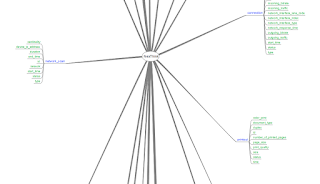Kali 1.1.0 upgrade to 2.0
Finally got some time post vacation/touring with work etc etc to upgrade my laptop with the latest major version. So first things first...
Pre-install, got myself to the latest update available:
(if you are so far back that you get an upgrade in linux kernel i woudl suggest bouncing your box before continuing for good measure)
The default /etc/apt/sources.list file points to the right repositories for the upgrade but the product has changed so we need to make some changes
You need to replace the above bold text with sana instead of kali.. Which will make it look like:
Now lets install/upgrade:
That will take a while.. Dont leave though because it will ask questions when it starts installing. My recommendation would be to replace the old configs with the new ones from the package maintainer when asked.
Post install:
After we are done, if you have done it like I did, from a terminal inside the gui, I would recommend just typing reboot or init 6 rather than trying to reboot the box via the gui... It did not work for me (which makes sense since most of gnome should be replaced at that point with the new-gnome).
What also is missing is gnome-control-center (for some reason) just install it and things can be configured again through it.
Good news, after the box is bounced things work as they should in the new gui and most importantly... I don't have to re-do my custom key-bindings because it kept them! Awesome :)
One of the unfortunate side-effects is that the mapping of devices has changed... my custom /etc/fstab had an external disk mapped at
/dev/mapper/udisks-luks-uuid-xxxxxxxx-xxxx-xxxx-xxxx-xxxxxxxxxxxx-uid1000
which became
/dev/mapper/luks-xxxxxxxx-xxxx-xxxx-xxxx-xxxxxxxxxxxx
Moreover, multi-monitors dont work like they used to, if you have multiple monitors the secondary is a single monitor now... unless you install this extension here.
New 4.0.4 kernel though.. VMware workstation does not appreciate that... There is a cure though (amazingly the same one for the 3.19 kernel)
Last clean-up would be to remove the 3.18 kernel that is still hanging around:
Thanks for reading :)
Pre-install, got myself to the latest update available:
apt-get update
apt-get dist-upgrade
(if you are so far back that you get an upgrade in linux kernel i woudl suggest bouncing your box before continuing for good measure)
The default /etc/apt/sources.list file points to the right repositories for the upgrade but the product has changed so we need to make some changes
vi /etc/apt/sources.list
deb http://http.kali.org/kali kali main non-free contrib
deb-src http://http.kali.org/kali kali main non-free contrib
deb http://security.kali.org/kali-security kali/updates main contrib non-free
You need to replace the above bold text with sana instead of kali.. Which will make it look like:
deb http://http.kali.org/kali sana main non-free contrib
deb-src http://http.kali.org/kali sana main non-free contrib
deb http://security.kali.org/kali-security/ sana/updates main contrib non-free
Now lets install/upgrade:
apt-get update
apt-get dist-upgrade
That will take a while.. Dont leave though because it will ask questions when it starts installing. My recommendation would be to replace the old configs with the new ones from the package maintainer when asked.
Post install:
After we are done, if you have done it like I did, from a terminal inside the gui, I would recommend just typing reboot or init 6 rather than trying to reboot the box via the gui... It did not work for me (which makes sense since most of gnome should be replaced at that point with the new-gnome).
What also is missing is gnome-control-center (for some reason) just install it and things can be configured again through it.
apt-get install gnome-control-center
apt-get autoremove
Good news, after the box is bounced things work as they should in the new gui and most importantly... I don't have to re-do my custom key-bindings because it kept them! Awesome :)
One of the unfortunate side-effects is that the mapping of devices has changed... my custom /etc/fstab had an external disk mapped at
/dev/mapper/udisks-luks-uuid-xxxxxxxx-xxxx-xxxx-xxxx-xxxxxxxxxxxx-uid1000
which became
/dev/mapper/luks-xxxxxxxx-xxxx-xxxx-xxxx-xxxxxxxxxxxx
Moreover, multi-monitors dont work like they used to, if you have multiple monitors the secondary is a single monitor now... unless you install this extension here.
New 4.0.4 kernel though.. VMware workstation does not appreciate that... There is a cure though (amazingly the same one for the 3.19 kernel)
apt-get install linux-headers-$(uname -r)
curl http://pastie.org/pastes/9934018/download -o /tmp/vmnet-3.19.patch
cd /usr/lib/vmware/modules/source
tar -xf vmnet.tar
patch -p0 -i /tmp/vmnet-3.19.patch
tar -cf vmnet.tar vmnet-only
rm -r *-only /tmp/vmnet-3.19.patch
vmware-modconfig --console --install-all
Last clean-up would be to remove the 3.18 kernel that is still hanging around:
apt-get remove linux-image-3.18
update-grub
grub-install /dev/sdaAll said and done the new look is good, yet seems a bit heavy on my poor laptop’s GFX card.
Thanks for reading :)
